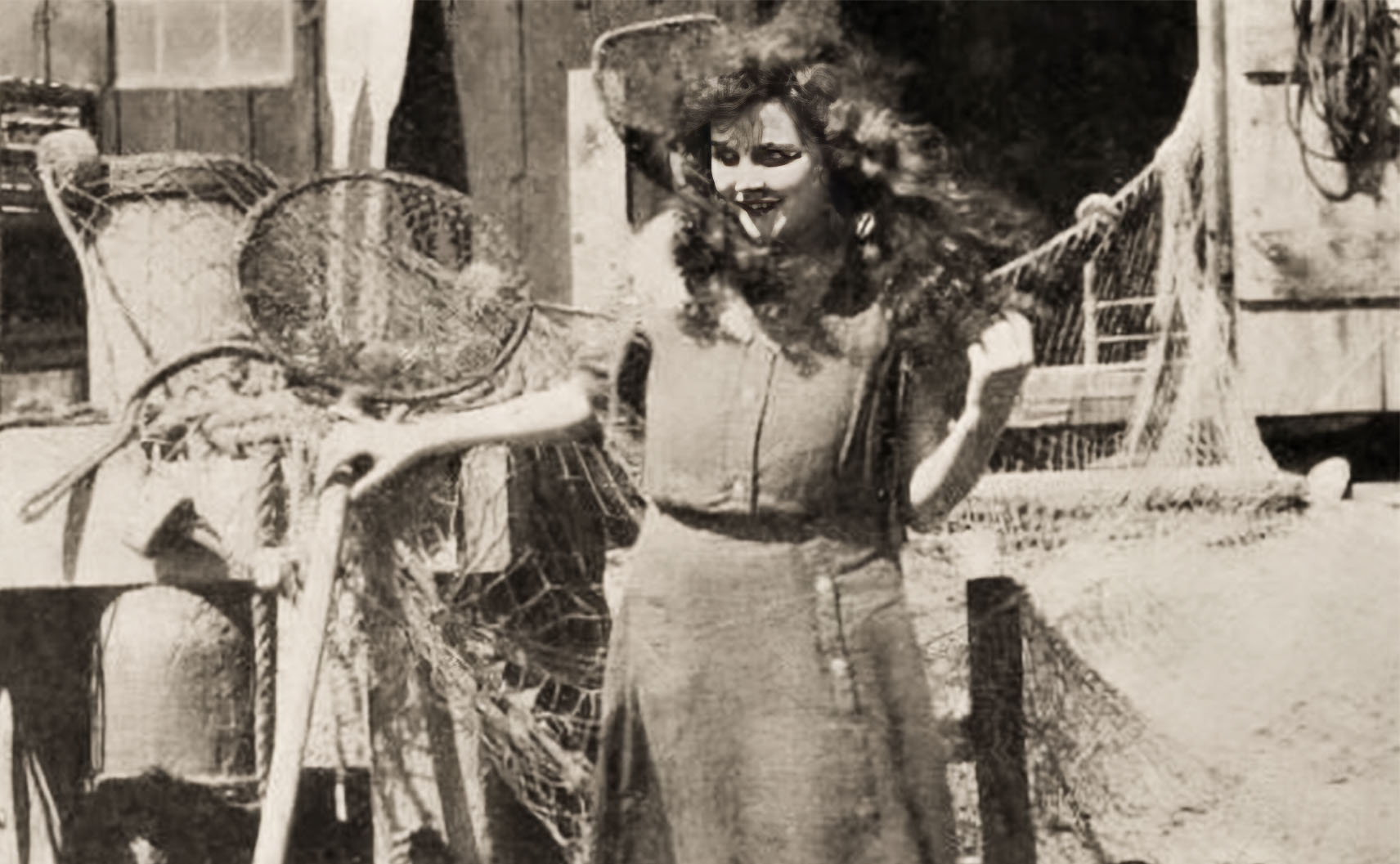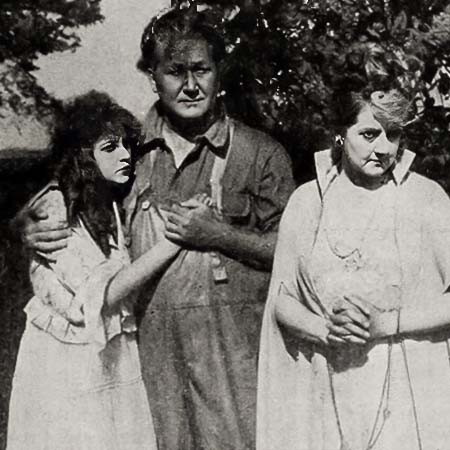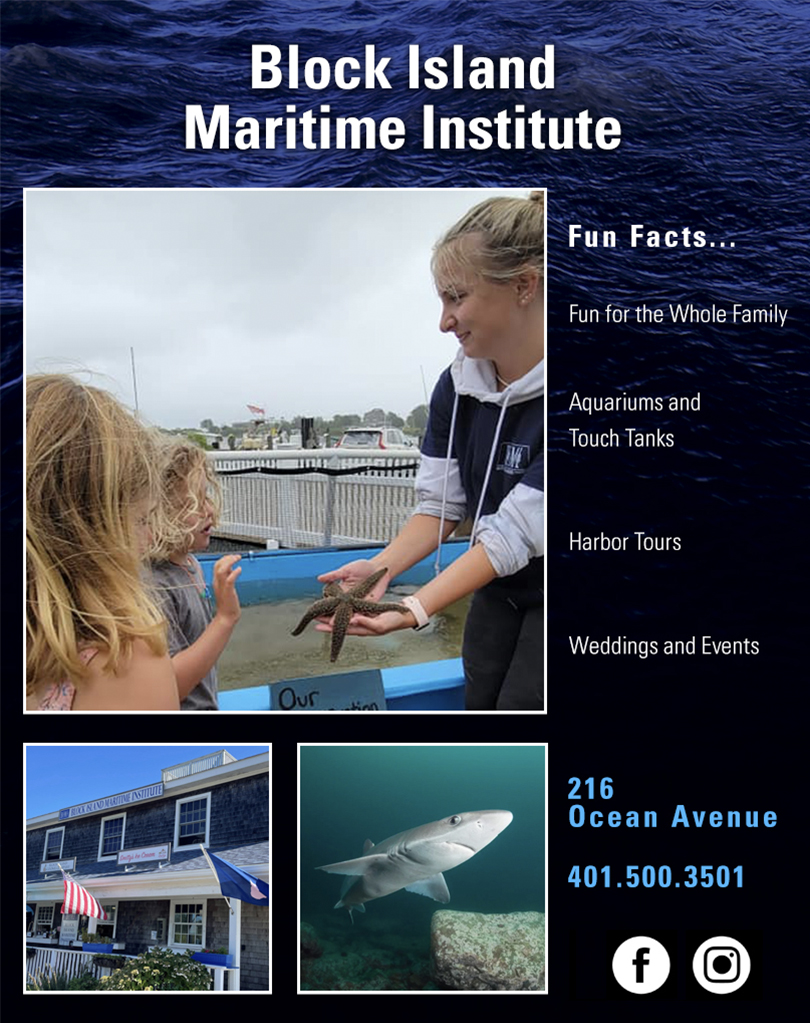
The Lost Block [Island] Buster
In 1915, Equitable Motion Pictures Corporation and World Film released their newest movie A Daughter of the Sea. It tells the story of a fisherman’s daughter, named Margot, who grows up in a small New England town. While she is uneducated and rough around the edges, she dreams of a better life. One of the men from her socialite magazines, Jack Rutledge, just happens to live on the other side of the cove from her home. Through a series of accidents and misadventures, Margot becomes entangled in the lives of the Rutledge family. What follows is an exploration of love, wealth, and social status.
At the time, this film had an all-star cast, a noted director, and a writer who would go on to do great things. It was shown all around the country and was considered a blockbuster film. What makes A Daughter of the Sea especially noteworthy, however, is where it was filmed: Block Island!
So, you may be wondering where you can watch this movie. The truth is that nobody will see it ever again. A Daughter of the Sea is one of the early lost movies in the long history of American cinema. What little information we have is drawn from newspaper articles, interviews, and the lives of the people involved.

Early Cinema
It’s important to note that motion pictures were in their infant stages when the movie was produced. The earliest surviving film is a three second movie called the Roundhay Garden Scene shot in Northern England in 1888. The world’s first full-length feature film, The Story of the Kelly Gang, was released in Australia in 1906 and the first United States feature, Les Misérables, came out 3 years later in 1909. A Daughter of the Sea followed these first feature length films by less than a decade.
The filmmakers in this first decade of silent films were taking what they had learning making short films for nickelodeons and novelty exhibitions and discovering what they could do with long form stories. Technology was advancing quickly in the field which allowed more flexibility and consistency to the whole process. Location and film length, once stumbling blocks, easily became problems of the past.

Writers and Actors
A Daughter of the Sea was written by Russell E. Smith and adapted from a story by Frances Marion called “The Fisher Girl”. Smith would go on to do seven more films and shorts before his career ended in 1918. Frances Marion, however, would have a larger impact on the film industry. Throughout her film career, Marion would write over 300 scripts, have 130 produced films, direct 3 movies, and become the first woman to win Academy Awards for Best Original Screenplay (The Big House, 1930) and Best Original Story (The Champ, 1932).
The film’s leading lady, Muriel Ostriche, was considered one of motion picture’s first starlets. In her career as an actress, she appeared in 134 films and was an early spokesmodel for brands such as Moxie soda and Bonnie-B veils. She began to appear in films when she was around 16 years old and was 18 at the time she made A Daughter of the Sea. Despite all this, she retired from the film industry in 1922.
The role of Jack Rutledge was played by Clifford Grey. Grey only acted in about 27 films between 1914 and 1922. Where he really found his calling was as a lyricist and songwriter for screen, Broadway and West End shows. His songs have appeared in such modern films as The Bridge on the River Kwai, Amélie, The Wolf of Wall Street, and Wonder Woman.

Shooting on Block Island
In Michael G. Ankerich’s book Broken Silence: Conversations With 23 Silent Film Stars, Muriel Ostriche was interviewed about her career. A Daughter of the Sea was her first film with World Film Company, and she considered it her best performance and favorite film. “It was a wonderful picture… We went to Block Island, RI to do the locations. We spent a month there and had the whole place to ourselves. Since it was the offseason, the crew used to catch lobsters in the morning, and we’d have lobster for breakfast.”
The acting business at the time, however, wasn’t quite the same as it was nowadays. Actors were expected to perform their own stunts. Muriel was required to be barefoot for most of the film and ran on the beach quite a bit. “When the scene was finished, I would collapse. My feet hurt me so much.”
In fact, one of the scenes almost cost Muriel her life. In the opening of the movie, her character Margot is washed ashore in a wooden crate. They created a breakaway box that she could ride in and dragged her out into the waves. On the first take the box prematurely opened. However, on the second take the box turned upside down in the water and trapped her inside. “My thought that all this was ironic. Here I had finished this picture and now I’m going to be drowned.” Fortunately, the crew noticed the box flip and were able to pull her out to safety. This take ended up being the one they included in the final product.

Lost
A Daughter of the Sea is one of the hundreds and hundreds of early films that have been lost to history. In the early days, films were not considered artwork and were not deemed valuable enough to be saved. Often after a film had it’s run in a theater, the reel would be thrown away. Even later, when talkies became the main type of film produced, silent pictures were considered out-of-date, so they were also destroyed.
Another factor was film in those days were made with nitrate. Nitrate film was very flammable and was known to spontaneously combust. In fact, entire archives of early films were completely lost to fires, including the Fox Pictures storage vault fire of 1937 and the MGM vault fire of 1965. If a film was saved and had not been destroyed in a fire, time and age would eventually take it away. Nitrate film is chemically unbalanced and, unless it was stored in ideal conditions, would either turn into a sticky blob or dry out and turn into a course powder.
The Film Foundation, a non-profit dedicated to film preservation, estimates that more than 90% of American films created before 1929 are forever lost.
It’s strange to think that Block Island had a little part in the birth of American cinema. While it is a shame that A Daughter of the Sea will never be seen again, that doesn’t mean you can’t enjoy a few modern films that have been shot on or around the island. A few selections that you might want to check out are The Block Island Sound and Vengeance Is Mine. Also, be sure to keep an eye out for the Block Island Film Festival to see the blockbusters of tomorrow!
Grab Your Popcorn and Sail Away…


























